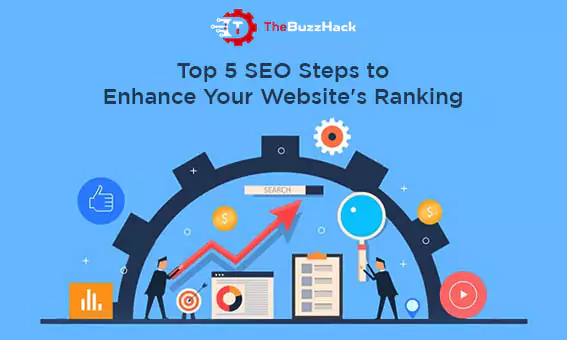Would you like to increase your website’s visitor count? Search Engine Optimization (SEO) is the solution. The key is to boost your website’s visibility in search results. Here, we’ll delve into 5 effective methods that work whether you’re a newcomer or have been in the field for a considerable time. Let’s explore these strategies.
The Fundamentals of SEO and Its Significance
Uncovering the Ways Users Discover Websites for Products and Services
Individuals typically seek products and services online through search engines like Google, Bing, or Yahoo. Additionally, social media platforms such as Facebook, Instagram, or Twitter serve as avenues for finding relevant websites.
Businesses can pinpoint and cater to their specific audience by engaging in keyword research, gaining insights into demographics and interests, and aligning their website content with prevalent search patterns.
Leveraging tools like Google Analytics to monitor user behavior on their website and comprehending the avenues through which users discover them can prove advantageous for businesses.
Establishing and sustaining an active presence on platforms frequented by their target audience can enhance businesses’ effectiveness in reaching and engaging with their desired customer base.
Differentiating Between Paid and Organic Search Engine Outcomes
Paid search engine outcomes bear labels such as “Ad” or “Sponsored,” signaling their status as paid advertisements. Conversely, organic search results lack these identifiers and are determined by the search engine’s algorithm, emphasizing relevance.
A distinctive feature for users to discern between the two is examining the URL. Paid results typically display lengthy strings of characters, while organic outcomes feature a more streamlined URL structure.
Paid search results often incorporate sitelinks, callouts, or ad extensions, while organic results present meta descriptions and rich snippets.
Users can employ diverse SEO strategies to distinguish paid and organic search results. This involves attentiveness to visual and textual cues, scrutiny of search listings, and a deeper understanding of search engine results pages.
By taking these considerations into account, users can make well-informed decisions and gain insights into the nature of the search results they encounter.
Detailed Exploration of SEO Strategy
Developing a Comprehensive List of Keywords
To compile an effective set of keywords for a website, diverse methods can be employed. These encompass brainstorming sessions, competitor analysis, and the utilization of keyword tools such as Google Keyword Planner, SEMrush, and Ahrefs. These tools offer valuable insights into search volume, competition, and associated keywords. It is crucial to delve into user search queries, identify long-tail keywords, and comprehend user needs to ensure alignment with audience expectations.
Implementing these practices contributes to enhancing the content on your website, increasing its visibility in search results.
Conducting an In-Depth Analysis of Google’s Initial Results Page
Understanding user behavior and search intent on Google’s primary results page involves a thorough examination of both organic and paid search outcomes. Key considerations include the relevance of content to user queries, the overall quality of websites and content, and the presence of useful features such as snippets and rich snippets.
Extracting insights from the ‘People Also Ask’ section aids in refining the SEO strategy by uncovering common user queries related to the topic. Furthermore, conducting a competitive analysis is vital to identify competitors’ strengths and weaknesses, facilitating adjustments and enhancements to one’s own approach.
Analyzing factors like keyword usage, content quality, and backlink profiles enables the fine-tuning of the SEO strategy for optimal performance on Google’s initial results page.
Crafting Distinctive and Exceptional Content
Businesses can forge unique and superior content by employing several crucial strategies:
- Conducting comprehensive keyword research to identify popular search terms and trends.
- Strategically integrating these keywords into the content to enhance visibility on search engines and drive increased traffic to the website.
- Implementing high-quality and relevant visuals, such as images, infographics, and videos, to elevate user engagement and retention.
- Employing a well-structured and visually appealing layout and design to enhance the overall attractiveness and readability of web content.
- Offering valuable and actionable information to the audience to attract visitors and encourage them to return for more.
- Cultivating a distinctive brand voice and tone to set the business apart and establish a robust online identity.
When executed effectively, these strategies enable businesses to create content that stands out as unique and superior compared to that of their competitors.
Integrating Hooks for User Engagement
An effective method to enhance SEO and maintain user interest is by incorporating hooks into web content. This can be achieved by crafting attention-grabbing headlines, sharing compelling stories, and adding interactive elements. These tactics aim to capture and retain the user’s attention. For instance, engaging titles and opening lines can entice users to click and linger on the page, leading to increased website traffic and heightened engagement.
Furthermore, the inclusion of captivating visuals and multimedia contributes to an improved user experience, prolonging the duration of visitor stays on the site—an aspect appreciated by search engines.
Mastering On-Page SEO Optimization Techniques
A proficient approach to optimizing on-page content for SEO involves meticulous keyword research to identify relevant and high-traffic keywords. Incorporating these keywords into the content is essential for improved search engine visibility.
Additionally, enhancing meta tags, headings, and meta descriptions with targeted keywords can elevate search engine ranking. Creating high-quality, original content that adds value to the audience is crucial, requiring well-organized and easily navigable content. Achieving this involves clear page titles, URL structures, and internal linking to enhance user experience and align with search intent.
Furthermore, optimizing images with descriptive alt text and relevant file names contributes to on-page SEO performance. Lastly, ensuring a swift and mobile-responsive website design positively impacts SEO, acknowledging that user experience and site speed are pivotal factors in search engine algorithms.
Tailoring Web Content to User Search Intent
Optimizing web content for user search intent starts with thorough keyword research to identify specific terms and phrases users are searching for. By tailoring content to directly address these search queries, website owners can enhance their relevance.
Creating high-quality, relevant, and informative content that directly addresses the needs and questions of the target audience is paramount. This may include crafting how-to guides, FAQs, and in-depth articles that deliver substantial value to users.
Understanding user search intent is critical as it enables website owners to align their content with the specific goals and desires of their audience. This ensures that content is not only optimized for search engines but also genuinely valuable to users.
Recognizing the Impact of Design on Content
Effective design plays a pivotal role in attracting and engaging users with content. Elements like layout, color scheme, and visual components contribute to the overall user experience, making the content more visually appealing and comprehensible.
Design also influences content success by enhancing readability and guiding the user’s focus toward crucial information. Considering design in content creation is imperative for SEO, as search engines prioritize user-friendly content.
Well-designed content often leads to lower bounce rates and longer dwell times, significant factors in SEO rankings. By prioritizing design, content creators can enhance the effectiveness of their content and fortify their SEO strategy.
Establishing High-Quality Links for Your Webpage
Crafting valuable and pertinent content serves as an excellent method to acquire quality links to a webpage. Seeking links from relevant websites and incorporating internal links and backlinks from reputable sources can enhance your webpage’s link profile.
Refreshing outdated content with new information or visuals not only boosts organic website traffic but also improves search engine rankings. This refresh can make the content more enticing, encouraging visitors to share and link to it.
Enhancing and Consistently Refreshing Your Web Content
Regularly updating web content is crucial for elevating search engine rankings and fostering user engagement. Frequent additions of fresh and pertinent content signal to search engines that the website is active and valuable, potentially resulting in higher rankings and increased traffic.
Effective strategies for updating outdated content encompass conducting a content audit to identify underperforming pages, updating statistics and outdated information, and integrating new keywords based on current search trends. Incorporating high-quality external links from credible sites contributes to a website’s credibility, while internal links guide users to related content.
By employing these strategies, website owners can enhance the quality and relevance of their web content, leading to improved search engine rankings and heightened user satisfaction.
Practical SEO Techniques for Beginners
Harnessing the Power of the ‘People Also Ask’ Section
Integrating the ‘People Also Ask’ section into an SEO strategy can yield significant benefits for businesses. This method involves identifying prevalent questions related to target keywords and tailoring content to address these inquiries. By doing so, businesses may attain higher search engine rankings and increased visibility.
Engaging with the ‘People Also Ask’ section provides businesses with valuable insights into the specific concerns of their target audience. Armed with this understanding, they can create content that precisely tackles these concerns, leading to enhanced user engagement and an increased likelihood of conversion.
For those new to leveraging the ‘People Also Ask’ section, conducting thorough keyword research is a practical starting point. Identifying the most relevant and commonly asked questions aids in crafting well-structured and informative content that directly addresses these queries. Furthermore, exploring related questions within the ‘People Also Ask’ section can offer additional inspiration and content ideas.
Performing a Thorough Competitive Analysis
In the realm of SEO, a competitive analysis entails discerning the factors influencing search rankings, encompassing keywords, backlinks, website speed, and mobile optimization.
Businesses can leverage tools such as SEMrush, Ahrefs, and Moz to gather information about competitors’ SEO strategies, including details on keywords, backlinks, and on-page optimization.
Critical considerations during a competitive analysis include domain strength, organic traffic, content quality, and user experience. By comprehending these aspects, businesses can formulate a strategic plan to enhance their SEO performance and stand out in the online landscape.
Harnessing Internal Links and Backlinks
Internal links play a pivotal role in website SEO, enhancing both performance and user experience. By strategically placing internal links within website content, search engines gain a better understanding of page hierarchy and relationships, resulting in improved indexing and visibility. These links also guide users to relevant information, reducing bounce rates and fostering engagement.
Securing high-quality backlinks is paramount for a robust SEO strategy. These backlinks act as a vote of confidence from other websites, underscoring a site’s value. Acquiring backlinks involves creating valuable content that naturally attracts links, pursuing guest posting opportunities on relevant websites, and leveraging industry relationships.
Regularly auditing and updating both internal and external links is essential for maintaining SEO health. Broken links can detrimentally impact a website’s ranking and user experience. Routine checks and updates ensure effective navigation for users and search engines, preserving the credibility and authority that high-quality backlinks bring.
Revitalizing Outdated Content
Identifying and revitalizing outdated content starts with analyzing website analytics to spot pages with declining traffic and engagement. Conducting keyword research identifies relevant and trending topics requiring updates. Once outdated content is identified, refreshing it with current data, adding new statistics, case studies, and expert insights ensures valuable information for the audience.
Optimizing content for core web vitals—such as page speed, mobile-friendliness, and secure browsing—improves website performance and user experience. This revitalization effort not only targets new keywords but also optimizes meta tags and includes relevant internal and external links to enhance search engine ranking. Additionally, enhancing readability, visual appeal, and multimedia content within outdated pages boosts user engagement for overall website improvement.
Understanding and Enhancing Core Web Vitals
Core Web Vitals are critical metrics for website optimization, covering loading performance, interactivity, and visual stability. Tools like PageSpeed Insights and Lighthouse aid website owners in measuring and analyzing these metrics. Practical improvement strategies involve optimizing images and videos, leveraging browser caching, and reducing the use of third-party scripts. Implementing features like lazy loading for off-screen images and deferring JavaScript further contributes to improved user experience and website SEO performance.
In Conclusion
Elevating a website’s ranking necessitates effective SEO strategies, encompassing content optimization with relevant keywords, cultivating high-quality backlinks, enhancing website loading speed, and prioritizing user experience. Integrating local SEO tactics for specific geographic targeting is also crucial, and the creation of engaging content remains a potent factor in boosting overall website ranking.
Read More: Tech Forecast for 2024





